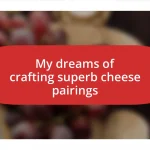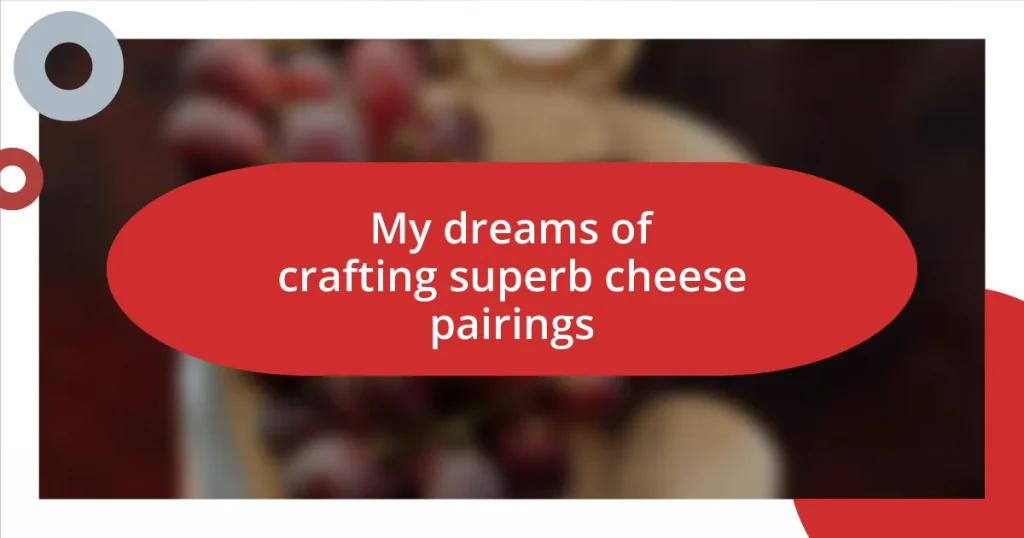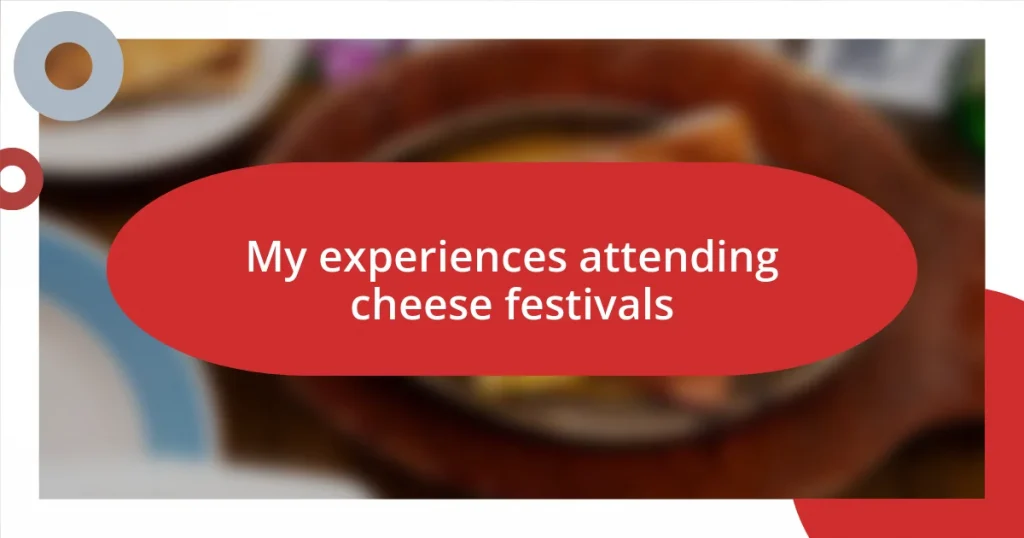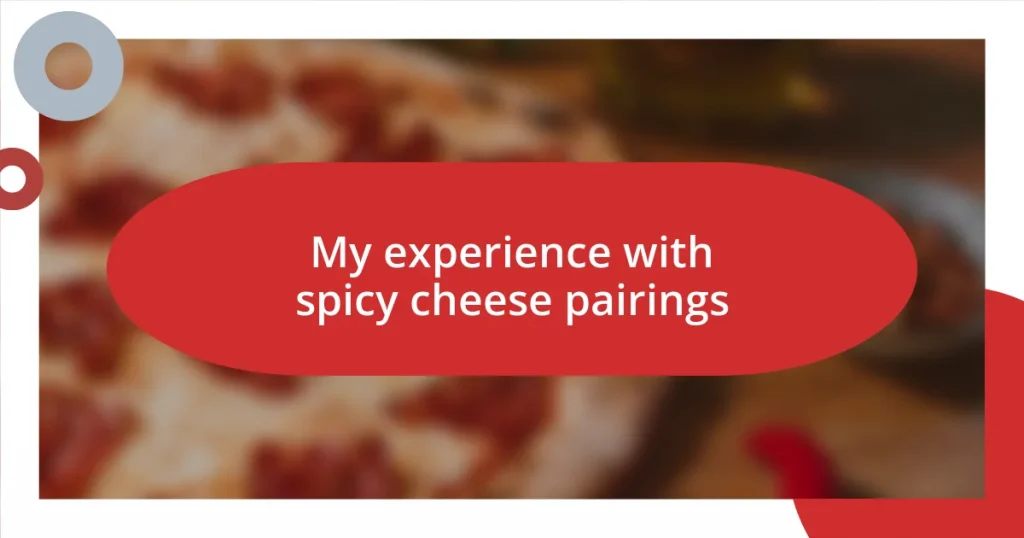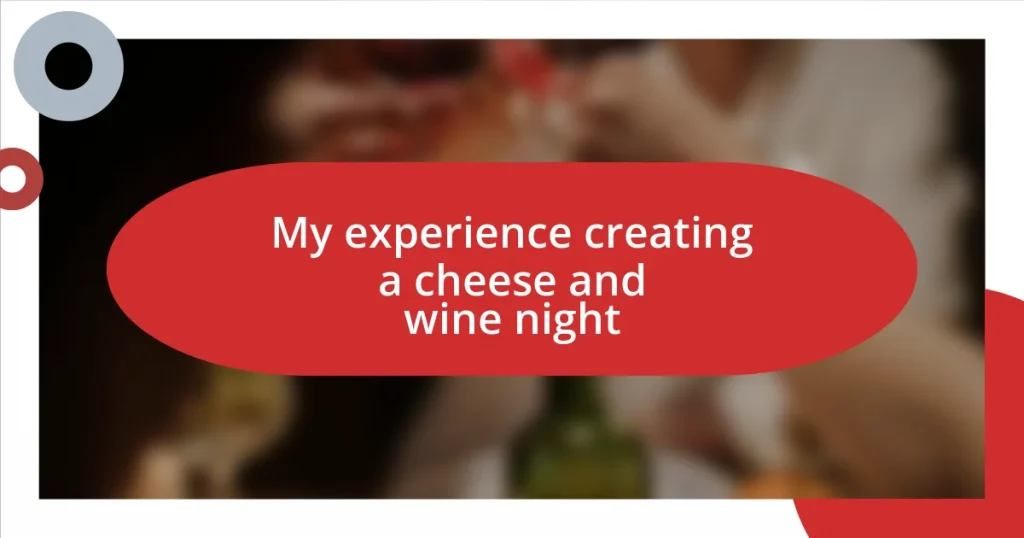Key takeaways:
- Understanding cheese involves appreciating its diverse milk types, aging processes, and the influence of terroir on flavor, enhancing the overall tasting experience.
- Choosing the right cheese and pairings is crucial; contrasting textures and flavors can elevate simple ingredients into extraordinary combinations.
- Presentation and storytelling play significant roles in serving cheese; thoughtful arrangements and engaging anecdotes can enrich the tasting experience for guests.
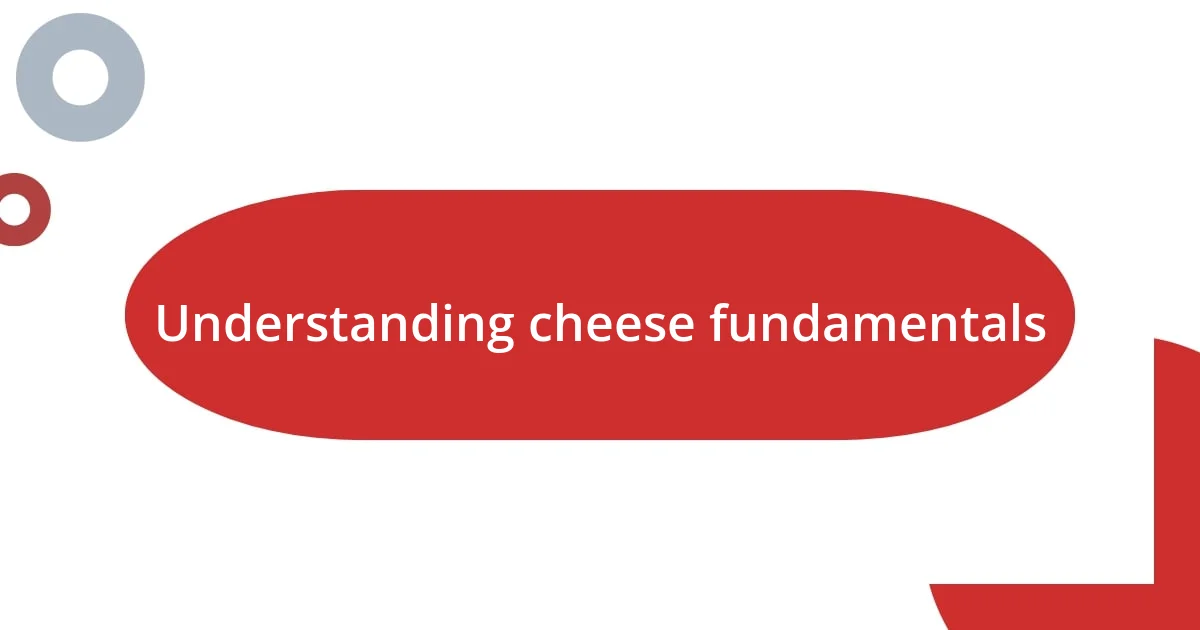
Understanding cheese fundamentals
Cheese is a fascinating intersection of science and art; understanding its fundamentals can really elevate your appreciation and choices. From the basics of milk types—like cow, goat, or sheep—to how the aging process can transform flavors, each step impacts the final product in astonishing ways. Have you ever noticed how a simple cheddar can taste utterly different at various ages? It’s like meeting the same person at different stages of their life.
When I first started exploring cheeses, I was overwhelmed by the variety. I remember tasting a creamy Brie, my senses flooding with its rich, buttery flavor, and thinking how captivating it was that a simple ingredient could yield such complexity. The texture, whether soft, crumbly, or hard, plays a vital role in the experience, and I often wonder which texture speaks to me the most. This hands-on exploration taught me that pairing cheese with the right accompaniments transforms the tasting experience entirely.
Let’s not overlook the importance of terroir, which refers to the environmental factors that influence a cheese’s taste, much like wine. I vividly recall visiting a local cheese farm where the grass, soil, and climate were all part of the cheese’s narrative. It sparked a realization: every bite tells a story, and understanding these fundamentals allows us to connect more deeply with what we eat. How exciting is it to think that with every cheese, there’s a whole world of flavors shaped by nature?
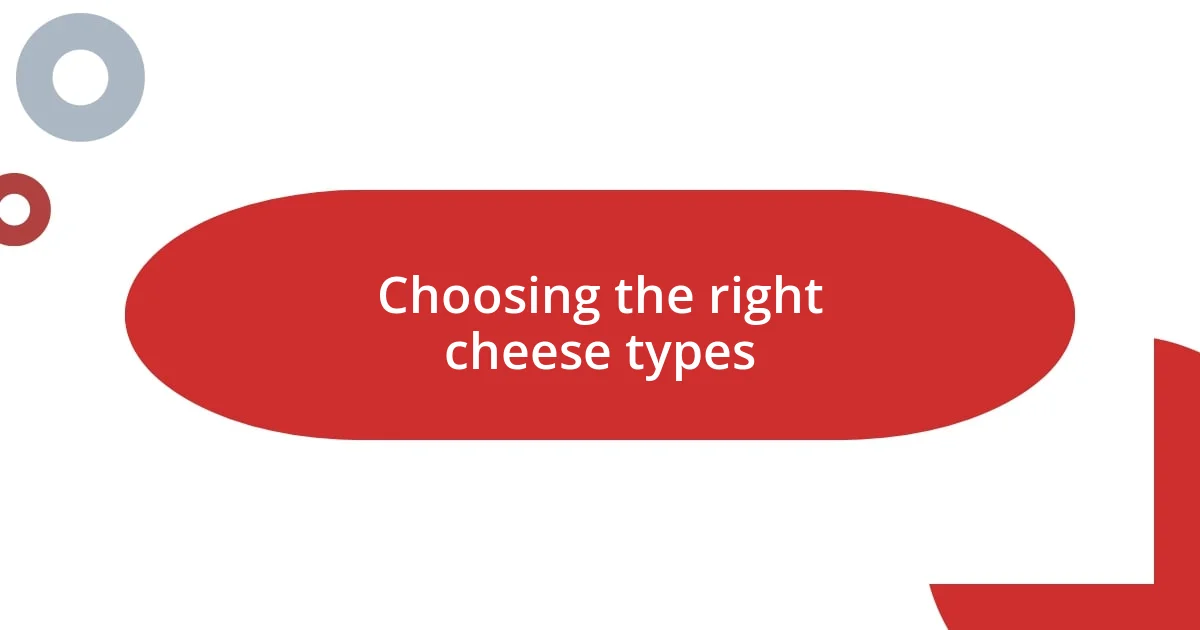
Choosing the right cheese types
Choosing the right cheese for your pairings can truly make or break the experience. I’ve learned that soft cheeses like Brie or Camembert offer a creamy richness that pairs wonderfully with fruits, while harder cheeses like aged Gouda are perfect companions for robust wines or charcuterie. Once, I paired an earthy goat cheese with honey and rosemary crackers for a gathering, and the contrast was exquisite—every bite was a delightful surprise for my guests!
It’s crucial to consider flavor profiles when selecting cheese. For example, a pungent blue cheese might clash with delicate foods but can shine alongside something bold like spiced nuts or dark chocolate. I remember a dinner party where I brought a tangy blue cheese and drizzled it with fig jam; the combination created a memorable harmony that left everyone craving more.
To make it easier, I’ve created a comparison table of cheese types and suggested pairings that resonate with my experience. This can serve as a handy reference when you’re on your cheese-pairing journey.
| Cheese Type | Flavor Profile | Best Pairings |
|---|---|---|
| Brie | Creamy, mild | Fruits, crackers |
| Aged Gouda | Nutty, caramel notes | Charcuterie, red wine |
| Blue Cheese | Pungent, sharp | Fig jam, dark chocolate |
| Goat Cheese | Tangy, earthy | Honey, rosemary crackers |

Selecting the perfect accompaniments
Selecting the perfect accompaniments is all about enhancing the flavors and textures of cheese. I recall a small gathering where I brought a creamy Havarti alongside a selection of artisan crackers and fresh apples. The crispness of the apples combined with the cheese’s buttery richness created a beautiful balance that delighted everyone. It’s remarkable how the right partner can elevate a simple cheese into something extraordinary.
When I think about accompaniments, I often visualize a vibrant cheese board. Here are some of my favorite pairings that have always resonated with me:
- Fruits: Fresh figs or sliced pears add a natural sweetness that contrasts beautifully with salty cheeses.
- Nuts: A handful of almonds or walnuts provides a satisfying crunch and earthiness.
- Honey: Drizzling honey over a tangy cheese like goat cheese always brings a smile; the sweetness brightens the overall flavor.
- Charcuterie: Meats such as prosciutto or salami introduce savory complexity, creating harmony with richer cheeses.
- Bread: A freshly baked baguette or artisan loaf can be the perfect vehicle for creamy cheeses, enhancing the entire tasting experience.
Exploring these combinations not only satisfies the palate but can also lead to joyful conversations around the table.
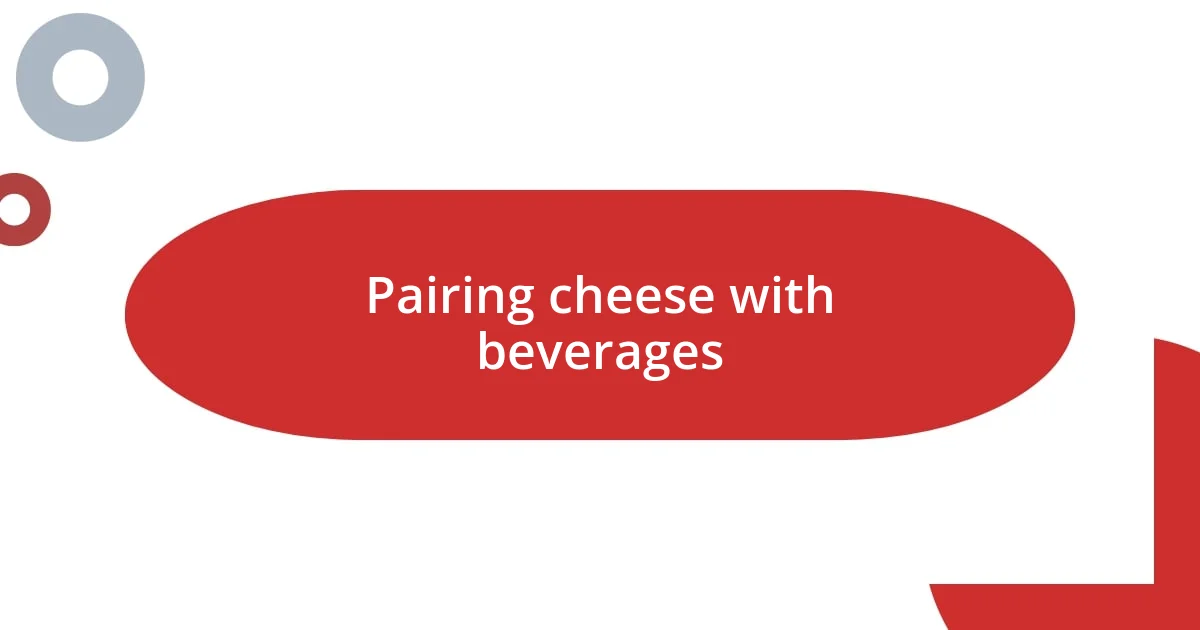
Pairing cheese with beverages
Pairing cheese with beverages takes the experience to another level, adding a new dimension of flavor that can truly wow your palate. I vividly remember hosting a cozy wine tasting session where I experimented with a rich Brie, paired with a crisp Sauvignon Blanc. The wine cut through the cheese’s creaminess, creating an indulgent sensation that had us all reminiscing about our favorite vineyard trips. Have you ever found yourself surprised by a pairing that seemed unconventional?
I’ve also explored the exhilarating combination of blue cheese and sweet dessert wine. One evening, I topped a crumbly blue cheese with a drizzle of honey and paired it with late-harvest Riesling. The contrast between the sharpness of the cheese and the honeyed notes of the wine was nothing short of magic. It made me realize how balance is key when crafting a delightful pairing. How often do we overlook that sweet and savory combination, which can offer such delightful results?
When it comes to beer, I often reach for a stout to complement aged cheddar. I once paired a bold imperial stout with a fierce cheddar, and the results were astonishing. The richness of the stout mirrored the cheese’s sharpness, resulting in a well-rounded bite that lingered on my tongue. Have you ever tried a pairing that made you rethink everything you knew about flavors? There’s definitely an art to finding the right match—and the journey is half the fun!
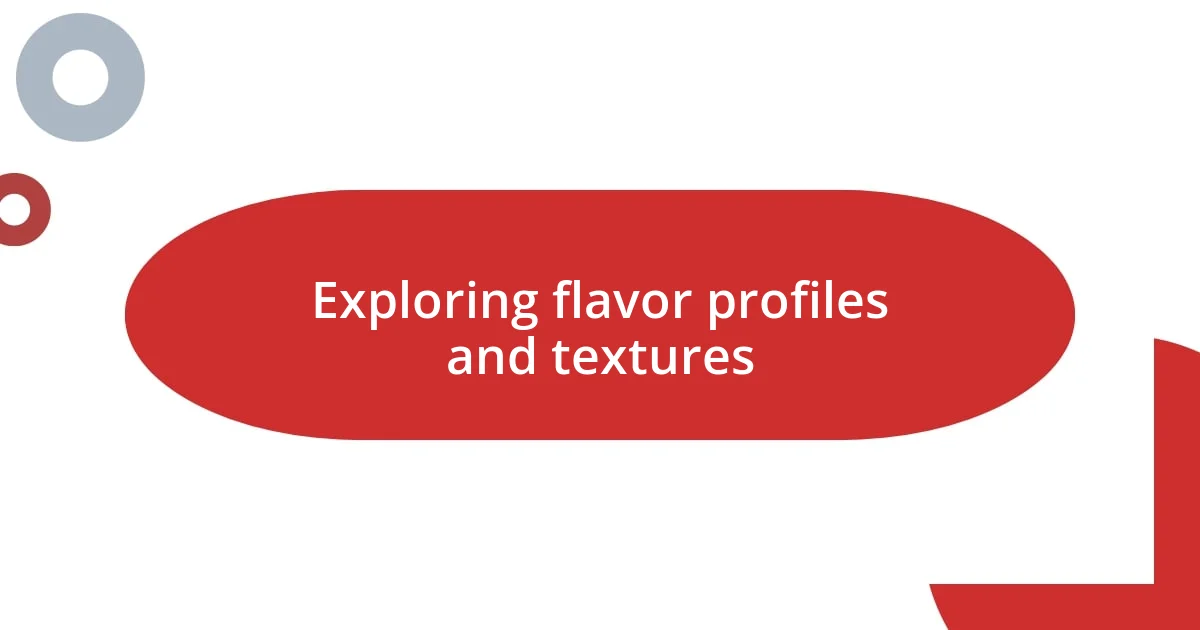
Exploring flavor profiles and textures
Exploring the intricate flavor profiles and textures of cheese is like embarking on a delightful adventure for the senses. I remember a particularly rainy afternoon when I decided to unwind with a sharp cheddar and a side of tangy pickles. The cheese’s crumbly texture contrasted brilliantly with the crunchiness of the pickles, and that savory punch was balanced beautifully by a hint of acidity. Have you ever thought about how two distinct textures can create such a memorable experience?
Texture plays a crucial role in how we perceive flavor. For instance, when I indulged in a velvety camembert paired with buttery crackers, it was like a smooth dance on my palate. The creamy cheese melted away, enveloping each bite in a luxurious embrace. This experience made me wonder—how often do we take the time to appreciate the tactile aspect of our food?
I’ve learned that the interplay of flavors and textures can surprise us in the most delightful ways. One evening, I took a leap of faith by combining crumbly feta with spicy roasted red peppers and a drizzle of olive oil. The creamy, salty feta together with the bold heat of the peppers created a symphony of tastes that I didn’t know I was missing. It’s moments like these that keep me exploring new pairings—what unexpected combinations will captivate your taste buds next?
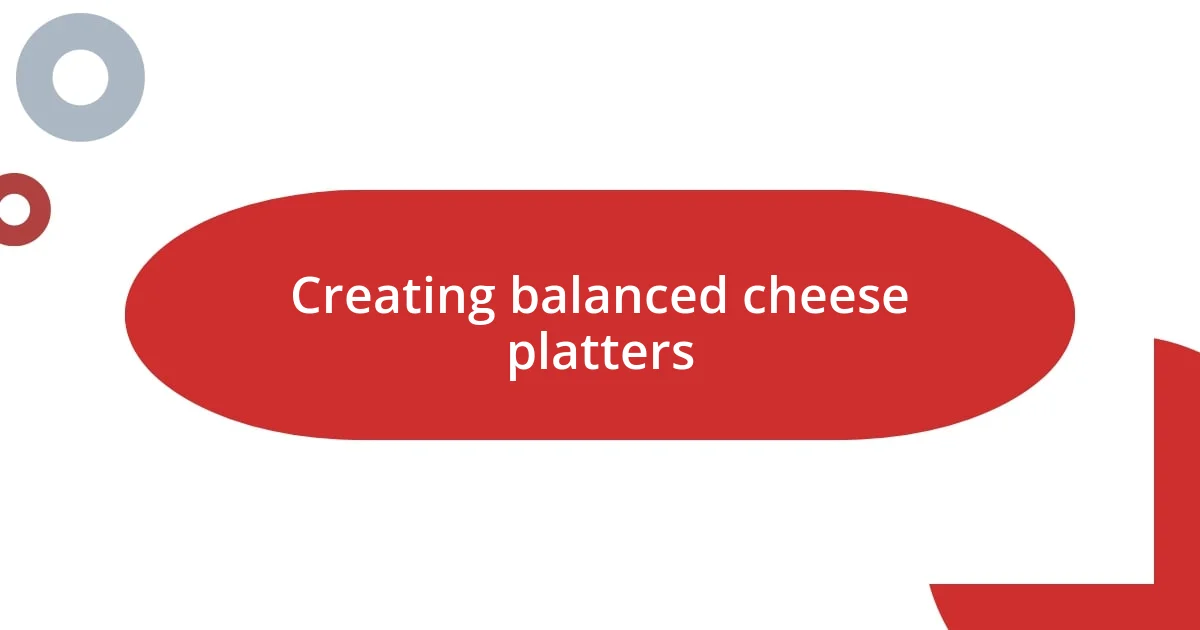
Creating balanced cheese platters
Creating a balanced cheese platter is all about harmony and contrast. I remember one gathering where I arranged a platter featuring a creamy goat cheese, a sharp aged gouda, and a tangy blue cheese. Guests savored the journey through varied textures and flavors, and I felt such joy watching their delight with each slice. Have you ever noticed how the mix of softer cheeses with firmer varieties adds charisma to your platter?
In my experience, including a variety of accompaniments elevates the overall experience. On one occasion, I added fresh figs and a handful of mixed nuts alongside my cheese selection. The natural sweetness of the figs provided a luscious counterpoint to the saltiness of the cheese, while the crunch of the nuts offered a satisfying texture that I couldn’t have anticipated. How do you feel when a simple addition transforms a dish into something extraordinary?
I find that presentation matters just as much as the flavors. When I use colorful garnishes like edible flowers or vibrant fruits, it creates visual appeal that entices the senses even before the first bite. There’s something remarkably rewarding about sharing a platter that not only tastes divine but looks stunning as well. Have you ever felt pride in serving a dish that sparks joy in others, both in flavor and aesthetics? It’s those moments that stay with us.
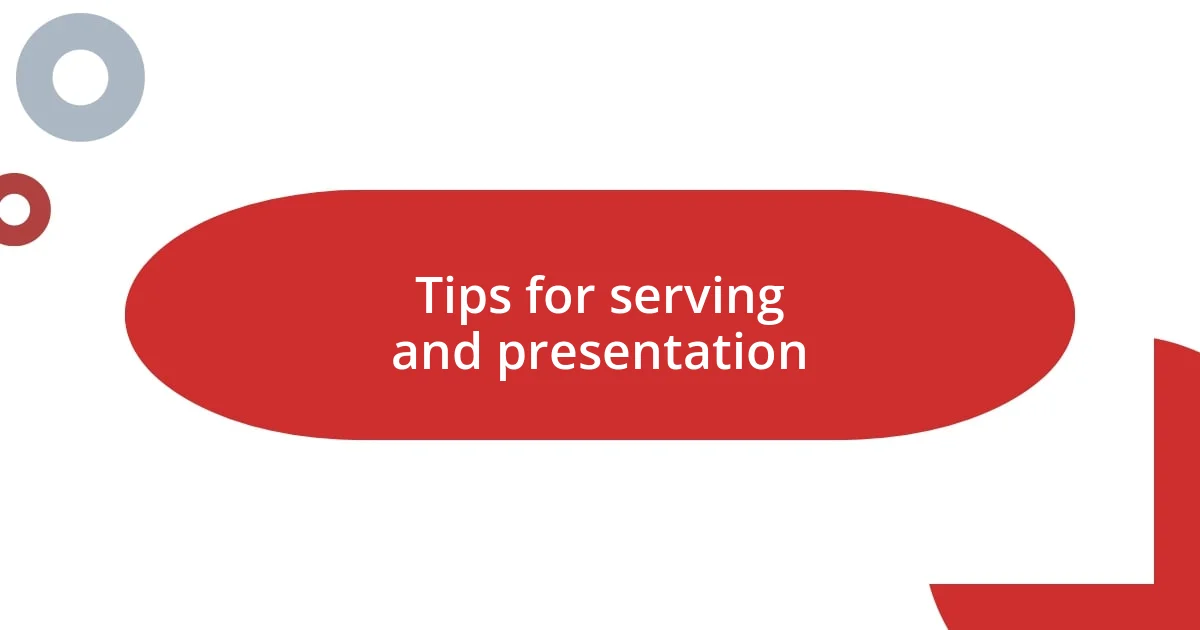
Tips for serving and presentation
When it comes to serving cheese, the first impression speaks volumes. I recall a dinner party where I decided to serve cheese in individual portions on small wooden boards, each with a distinct pair of accompaniments. The combination of rustic presentation and thoughtful pairings sparked conversation among guests, with each board inviting them to explore flavors together. Isn’t it interesting how the way we serve can enhance the experience?
Temperature can greatly influence the tasting experience as well. I’ve made it a point always to serve soft cheeses at room temperature; this allows their rich flavors to blossom. One evening, after sharing a delightful brie, I noticed how the warmth made it almost silky, creating a dish that felt more inviting. Have you ever observed how a simple adjustment, like temperature, can take a cheese from ordinary to extraordinary?
Finally, I’ve found that storytelling adds a personal touch when presenting cheese. At a recent celebration, I shared anecdotes about the origins of each cheese, like the delightful tale behind my favorite artisanal chèvre. This not only engaged my guests but connected them to the experience on a deeper level. Isn’t it remarkable how a story can turn a tasting into a memory?









